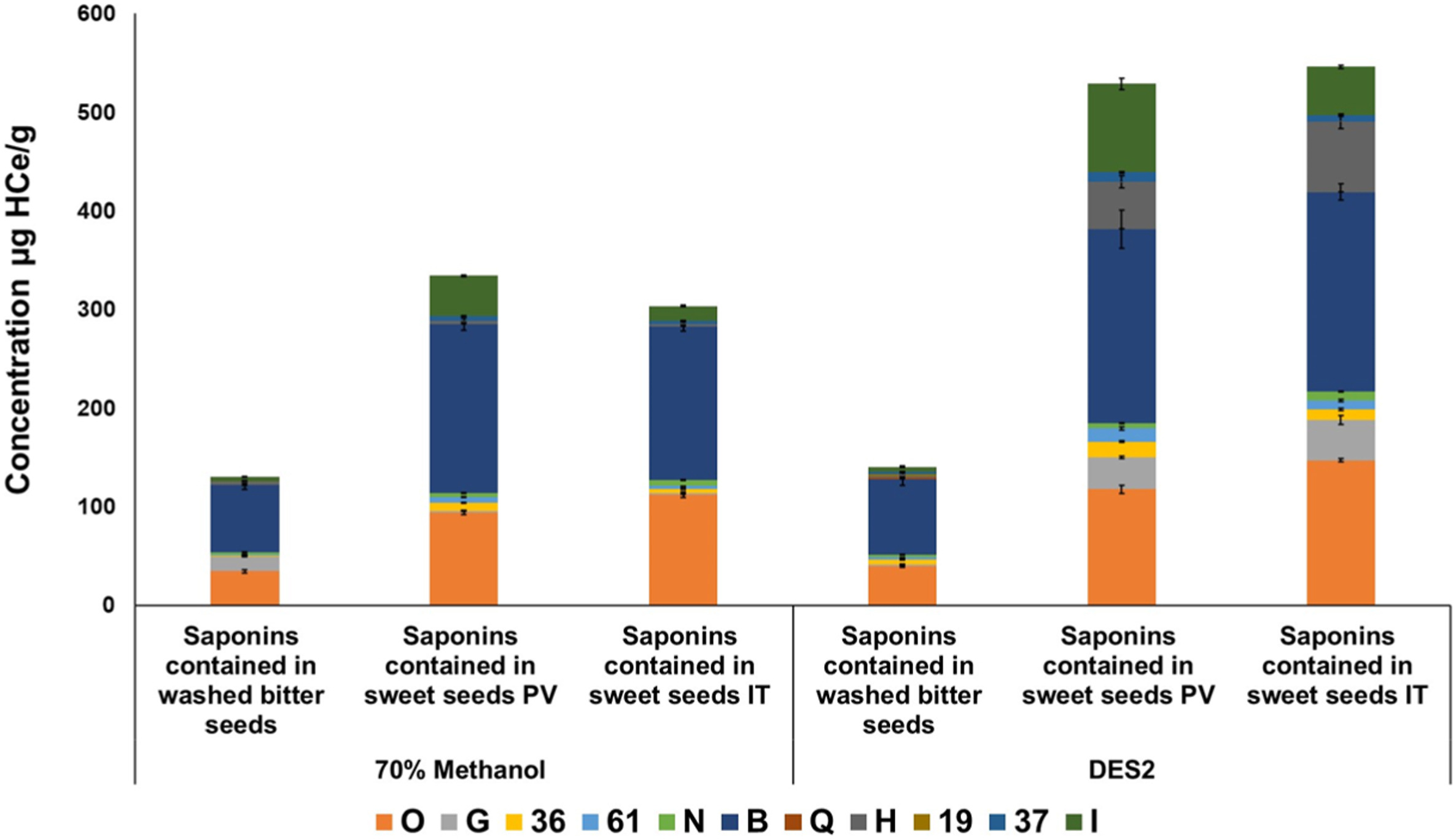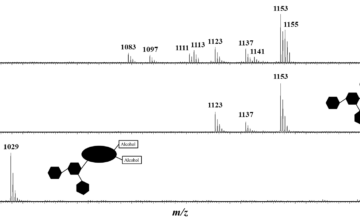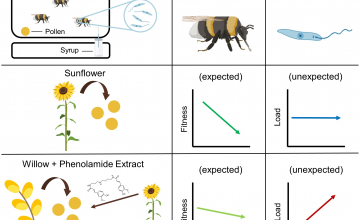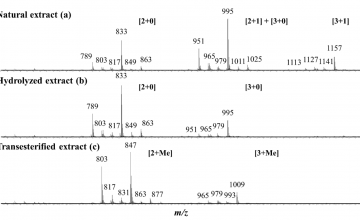Deep eutectic solvents for the extraction and stabilization of Ecuadorian quinoa (Chenopodium quinoa Willd.) saponins
In this work, a simple, fast (10 min) and environmentally friendly extraction method using deep eutectic solvents (DES), based on choline chloride and glycerol, was established to extract saponins from five quinoa samples: a) husks of bitter seeds, b) bitter seeds, c) water-washed bitter seeds, d) sweet seeds of the INIAP-Tunkahuan variety, and e) sweet seeds of the INIAP-Pata de Venado variety. The selected green solvent was a eutectic mixture of choline chloride – glycerol – water at a 1:2:1 M ratio. The extractions were performed in a ball mixer mill at room temperature (RT). A classical methanol – water (70:30, v/v) extraction was performed for comparison. In all quinoa samples, the characterization and relative quantification of saponins were achieved based on mass spectrometry analyses. Regardless of the type of solvent used (conventional or green solvents), hederagenin and phytolaccagenic acid were the major detected sapogenins in all tested quinoa samples. The husks of bitter seeds were the matrix with the highest saponin content. Although methanol – water (70:30, v/v) was shown to extract three times more saponins compared to DES, the green solvent offered a higher stabilization of quinoa saponin liquid extracts – up to 2 months – compared to conventional solvents (ethanol – methanol – water; 67:23:10, v/v/v). The present research shows that DES represent an efficient green media for the stabilization of bioactive saponins from quinoa and have a potential as possible alter

natives to organic solvents. Our work opens new perspectives for the valorization of saponin-rich quinoa by-products (the husks of bitter seeds) as components for pharmaceutical, nutraceutical and agro-food applications.




